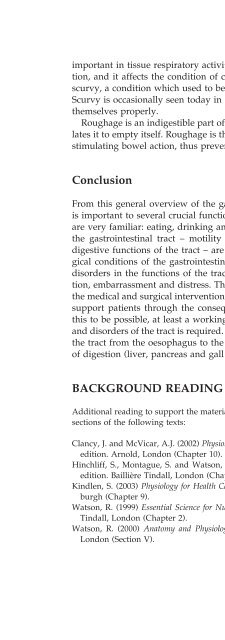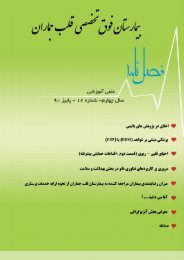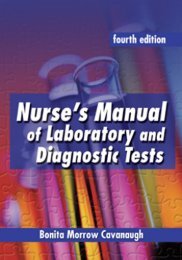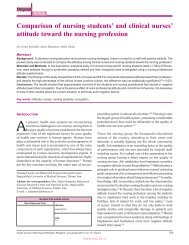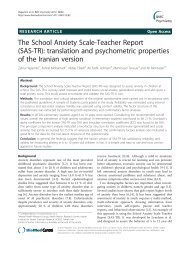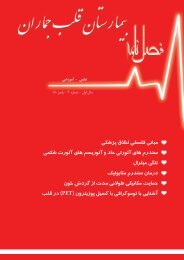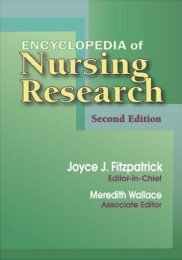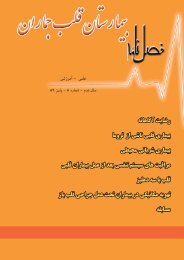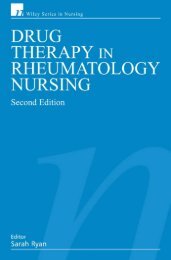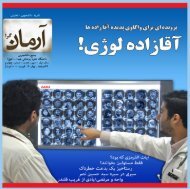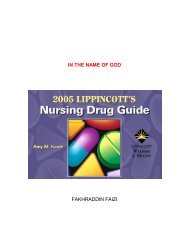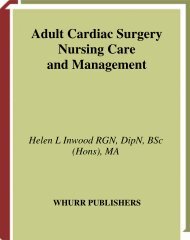Gastrointestinal Nursing.pdf
Gastrointestinal Nursing.pdf
Gastrointestinal Nursing.pdf
Create successful ePaper yourself
Turn your PDF publications into a flip-book with our unique Google optimized e-Paper software.
An Overview of the <strong>Gastrointestinal</strong> Tract 23important in tissue respiratory activity, wound repair and resistance to infection,and it affects the condition of capillary walls. Lack of vitamin C causesscurvy, a condition which used to be common in sailors on long sea voyages.Scurvy is occasionally seen today in older people who have not been feedingthemselves properly.Roughage is an indigestible part of food. It remains in the bowel and stimulatesit to empty itself. Roughage is the fibrous part of food, giving it bulk andstimulating bowel action, thus preventing constipation.ConclusionFrom this general overview of the gastrointestinal tract it can be seen that itis important to several crucial functions in the body and ones with which weare very familiar: eating, drinking and elimination. The two main activites ofthe gastrointestinal tract – motility and absorption, both necessary for thedigestive functions of the tract – are generally insensible. However, pathologicalconditions of the gastrointestinal tract affect these activities, leading todisorders in the functions of the tract with attendant discomfort, poor nutrition,embarrassment and distress. The nursing role, in addition to supportingthe medical and surgical interventions related to the gastrointestinal tract, is tosupport patients through the consequences of disorders of the tract and forthis to be possible, at least a working knowledge of the anatomy, physiologyand disorders of the tract is required. The following chapters take you throughthe tract from the oesophagus to the rectum and include the ancillary organsof digestion (liver, pancreas and gall bladder).BACKGROUND READINGAdditional reading to support the material in this chapter can be found in the relevantsections of the following texts:Clancy, J. and McVicar, A.J. (2002) Physiology and Anatomy: a Homeostatic Approach, 2ndedition. Arnold, London (Chapter 10).Hinchliff, S., Montague, S. and Watson, R. (1996) Physiology for <strong>Nursing</strong> Practice, 2ndedition. Baillière Tindall, London (Chapter 5.1).Kindlen, S. (2003) Physiology for Health Care and <strong>Nursing</strong>. Churchill Livingstone, Edinburgh(Chapter 9).Watson, R. (1999) Essential Science for <strong>Nursing</strong> Students: An Introductory Text. BaillièreTindall, London (Chapter 2).Watson, R. (2000) Anatomy and Physiology for Nurses, 11th edition. Baillière Tindall,London (Section V).


